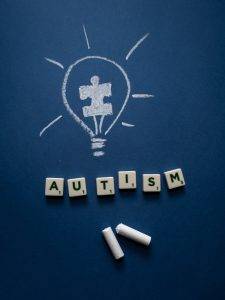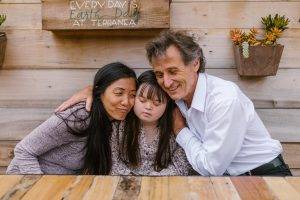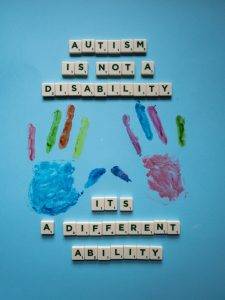What is autism spectrum disorder?
 Autism spectrum disorder (ASD) is a neurological and developmental disorder that affects how people interact with others communicate learn and behave although, it can be diagnosed at an early age, it is described as a developmental disorder because symptoms that appear in the first two years of life.
Autism spectrum disorder (ASD) is a neurological and developmental disorder that affects how people interact with others communicate learn and behave although, it can be diagnosed at an early age, it is described as a developmental disorder because symptoms that appear in the first two years of life.
According to the Diagnostic and statistical manual of mental disorder, a guide created by the American Psychiatric Association Health Care providers are used to diagnose people with ASD often have
- Difficulty with communication and interaction with other people
- Restricted interest and repetitive behaviors
- Symptoms that affect the ability to function in schoolwork and other areas of life
It is known as an autism spectrum disorder because there is wide variation in the type and severity of symptoms people experience. It is a neurodevelopmental condition characterized by
- Difference in language
- Socialization
- Repetitive actions
- Sensory differences
Signs and symptoms of Autism Spectrum Disorder
People with Autism have difficulty with social communication and interaction, restricted interest, and repetitive behavior. The list below gives some examples of common types of behavior in people diagnosed with ASD all people suffering from ASD will have behavioral issues but most will have several types of problems listed below
Social communication
 Making little or inconsistent eye contact
Making little or inconsistent eye contact- They find it difficult to make consistent undisturbed eye contact for long/ totally avoid it
- Sharing infrequent interests, emotions, or enjoying a certain object of the activities
- Appearing not to look at all or listen to people who are talking
- Not responding or slow to respond to one’s name or to other verbal expressions for attention
- Have difficulty in two-way communication
- Difficulty with back-and-forth conversation
- Display facial expressions and gestures which do not match what is being said
- Have a different peculiar tone of voice that may sound flat, robotic, or as if singing a song
- Have trouble understanding another person’s point of view and are unable to interpret/ understand other people’s actions
- Difficulty in mixing with friends or involving in pretend play
- Have difficulties in adjusting to social situations
- Talk continuously about a certain topic at a length, neither noticing that other peoples are not interested nor giving others a chance to respond
Repetitive Behavior
- Repeat certain behaviors such as repeating words or phrases a behavior called echolalia
- Have an intense interest in specific topics such as numbers, details, colors, or facts
- Shows overly focused interest such as moving objects are part of objects
- Becomes upset by slide change in the routine on having difficulty with translation
Sensory differences
 Hand flapping
Hand flapping- Jumping here and there without any fear of fall
- Enjoy being touched, squeezed, or dislike being touched
- Gets upset whenever someone tries to touch, brush, or cut their hair
- Become more sensitive or less sensitive than other people to sensory input such as light, sound, clothing, or temperature
- Get irritated by a loud sound
- Suffers from picky eating habits
- Either like mashed food/ crunchy food
Autistic people also experience sleep problems and irritability
Strength of Autism Spectrum Disorder
 They may have many strengths such as
They may have many strengths such as- Strong visual and auditory learners’ excellent in math, science, music, and arts
- Sharp memorizing capability
- Smart learners in detail and remember information for a long period of time
Cause and risk factors
Though researchers do not know the primary cause of Autism spectrum disease, various studies suggest that a person’s genes can act together with aspects of the environment to affect development in ways that lead to Autism spectrum disease some of the common factors that are associated with an increased likelihood of developing ASD include:
- Having certain genetic conditions (e.g., down syndrome or Faisal X syndrome)
- having older parents suffering from ASD
- Having siblings suffering from ASD
- Had a very low birth weight
- Was born prematurely
Diagnosing Autism spectrum disease
Autism is generally diagnosed by Health Care providers by validating a person’s behavior and development. It is generally diagnosed by the age of 2 years. It is better to seek and evolve as soon as possible. The earlier it is diagnosed sooner the treatment; services can be given.
Diagnosis in young kids. It is often a two-stage
 Stage 1: general developmental screening during wild child checkup
Stage 1: general developmental screening during wild child checkup
The American Academy of Pediatrics recommends that every child should receive well-child checkups with a pediatrician or early childhood Health Care provider. It is further recommended that all children receive screening for developmental delays at 9 to 18 months and 24 to 30 months wild child visits with specific Autism screening at their 18- and 24-month visits.
They receive additional screening if they are at high risk of developmental problems
Children at high risk include those who have a family member who shows somewhere that is typical of Autism Spectrum Disorder have older parents and have certain genetic conditions or had a very low birth weight or were preterm babies.
If a child shows developmental differences in the behavior of functioning during the spinning process Health Care providers may refer the child for additional evolution
Stage 2: Additional Diagnostic evolution
Early detection of Autism Spectrum Disorder, if possible, can also help caregivers determine which services additional programs and Birbal therapies are most likely to be helpful for the child. A team of healthcare providers who have experience diagnoses against you will conduct the Diagnostic evaluation these teams may include a child Neurologist developmental patrician Speech-Language pathologist psychiatrist educational specialist and an occupational therapist.
The Diagnostic evaluation is likely to include
 Medical and neurological examination
Medical and neurological examination- Assessment of the child’s cognitive abilities
- Observation of the child’s behavior
- An in-depth conversation gave the child behavior and development
- Assessment of the child’s language abilities
- Assessment of age-appropriate skills needed to complete daily activities independently such as eating, dressing, and toileting
- Is it a complex disorder that may sometime occur with other illnesses or learning disorders so the most comprehensive evaluation may include?
- Blood test and hearing test
The outcome of the pollution measures and informal diagnosis and recommendations for treatment
Diagnosis in older children and adolescents
Teachers and caregivers are often the first to recognize Indus in older children and don’t work in schools
School special education team may perform an initial evaluation and there and recommend that a child undergo additional evolution with their Primary Health Care provider or Health Care provider who specializes in ST older children generally have social difficulties including problems in subtle communication
This subtle communication may include problems understanding tone of voice facial expressions of body language they may have trouble understanding figure of speech humor or sarcasm. They may also face trouble in developing friendships with peers
Treatment and therapies
Early treatment of Autism Spectrum Disorder is most important as proper care and services can reduce individual certificates while helping them learn new skills and wheel on their strengths. People with HD mainly face a wide range of issues which means there is no single best treatment for ASD. Working closely with the healthcare provider is an important part of having the right combination of treatment, services, and Medication
 An ASD kid with problems may be prescribed certain medications to treat certain specific symptoms. Proper treatment may decrease their problems with:
An ASD kid with problems may be prescribed certain medications to treat certain specific symptoms. Proper treatment may decrease their problems with:
- Sensory issues
- Irritability
- aggression
- repetitive behavior
- attention problem
- anxiety and depression
- Picky eating habits
Behavioral psychological and educational intervention
People prefer to have a specialist who specializes in providing behavior and psychological education and skill development interventions. These programs are generally highly structured and intensive and may involve caregivers, siblings, and family members
This program may help people to test
- Reduce behavior that interferes with daily functioning
- increase or build upon strengths
- Learn social communication and language skills
- Learn life skills necessary for independent living
Final thought


